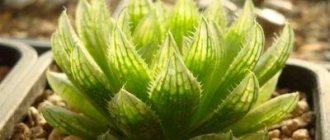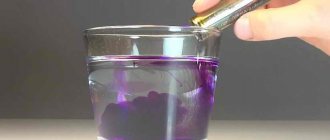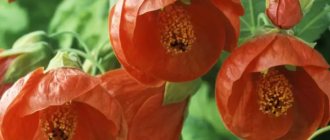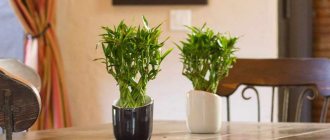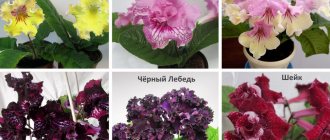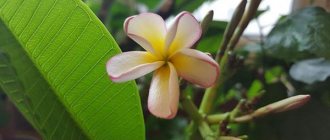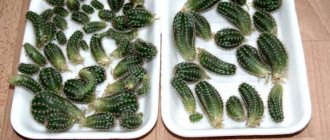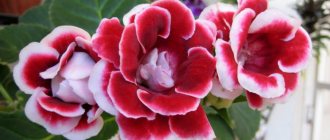The herbaceous perennial or annual plant Lamium is part of the Lamiaceae family. Under natural conditions, this plant can be found in Eastern Europe, and it prefers to grow along river banks. Outwardly, it looks like a simple low-growing weed. But as a result of the work of breeders, various cultivated ornamental varieties of jasmine have appeared, which can have different colors, stem heights and leaf shapes. The bush remains green and showy throughout spring and summer. Low-growing varieties are cultivated as ornamental ground cover plants, while tall perennial varieties are used to decorate ridges and flower beds.
Features of clear
Claryweed is characterized by very fast growth, which is why it looks very much like a simple weed. The maximum height of such a plant is about 0.25 m. Its root system is fibrous, and therefore it can very quickly fill a large area, decorating it with its branched stems. The dark green, heart-shaped leaves have a jagged edge. In the center of the leaves, soft veins are clearly visible; in some cases, the plate is decorated with spots.
Peduncles grow from internodes, and they can reach a length of about 0.3 m. They are overgrown with small leaf plates and flowers. The flowers can be painted in different colors; they have two-lipped corollas. In the center of each flower there are thin stamens with purple-black anthers. Flowers are collected in whorls. After the whorl withers, a seed capsule is formed in this place, and it contains triangular shaped nuts. This seed pod is the fruit of the jasmine. When the fruits are fully ripe, the seeds spill out of them on their own, thanks to which the plant reproduces well by self-sowing. Laminaria blooms for a very long time over several months. The first buds on peduncles are formed in the last weeks of spring, and the formation of fruits begins at the end of June.
Blank
There is an opinion that storing yasya is quite problematic. And all because its flowers have a delicious honey taste and aroma that attracts many insects. Therefore, it is recommended to store its dried flowers in vacuum packaging or a tightly closed container. Also, if exposed to moisture or high humidity, the raw materials will easily become moldy.
You can harvest yasnotka throughout the summer. If the number of plants allows, then only inflorescences are collected, but if there are not so many of them, then you can also collect leaves, which have no less benefits. Usually, for convenience, the tops of the shoots are harvested.
Purple lily is dried in a shaded place at a temperature not exceeding 40 degrees. To do this, you can use herb and vegetable drying mats or temperature-controlled vegetable dehydrators. When dry, the pink color of the inflorescences disappears and turns into a dirty gray.
Growing from seeds
Sowing
Laminaria is propagated by seeds. It is recommended to sow them in late autumn or early spring, at which time seed germination increases significantly. The seeds are sown not for seedlings, but directly into the garden.
Before you start sowing, you need to prepare the site. To do this, dig up the soil and remove all weeds. Level the surface of the soil in the area and distribute the seeds evenly. When the seedlings grow a little, they can be thinned out if necessary. Caring for the seedlings is quite simple; they only need to be watered moderately in a timely manner, if there has been no rain for a long time. Do not allow the top layer of soil in the garden bed to dry out, but at the same time make sure that the liquid does not stagnate in the root system of the plants.
Most often, the grass does not need weeding, because it itself can suppress the growth of weeds, while it covers the area with a continuous carpet. However, perennial weeds, which have a very powerful root system, will have to be removed from the site.
Lamia, propagated by seed, blooms only in the second year after the seeds are sown. Experts advise not to allow uncontrolled self-seeding of this plant, because over time it can begin to suppress the development and growth of other crops growing in the garden and located nearby. If you decide to plant different varieties of claret, then choose areas for them located further away from each other. If they grow next to each other, this may have a negative impact on their decorativeness, because after cross-pollination there will be no varietal differences between them.
Speckled lily (spotted)
Caring for claret in the open ground
Illumination
Such a herbaceous perennial plant as jasmine is unpretentious to grow. For her, it is best to choose areas that are in the lacy penumbra of tree crowns.
Priming
On the site, suitable soil for growing such a flower should be moist and loose, and it should contain a moderate amount of nutrients, including microelements. If the soil is overly fertile, this will lead to the rapid growth of damselfish, which may interfere with the normal growth and development of other flowering crops on the site.
Watering
Such a flower is watered systematically and abundantly, but make sure that water does not stagnate in the root system for a long time. During the dry period, the foliage dries out and curls, and shoots become exposed. Shortly before flowering begins, the plant should be fed with organic matter.
Trimming
Like other ornamental ground cover plants, jasmine should be systematically mowed. If this is done in a timely manner, then the flower will be able to maintain its spectacular appearance, as well as its bushiness.
Transfer
Adult bushes of perennial jasmine are replanted systematically, and this is done once every 5 years. This plant is highly resistant to frost, so it does not need additional shelter for the winter.
Botanical description
| Botanical illustration from the book by O. V. Thome “Flora von Deutschland, Österreich und der Schweiz », 1885 | ||||||||||
An annual or biennial plant with short, ascending or erect tetrahedral stems up to 30 cm tall.
The leaves are opposite, the lower leaves are small, on long petioles, rounded, the upper ones are heart-shaped, on short petioles.
The flowers are sessile, collected in groups of 6-8 in the leaf axils. The calyx is tubular-bell-shaped, the corolla is medium-sized, two-lipped, with a straight tube, purple in color.
The fruit is a coenobium: a fractional fruit consisting of four nut-shaped triangular parts (erems).
The plant blooms from spring to autumn.
Reproduction methods
Dividing the bush
Laminaria can be easily propagated by dividing the bush. This propagation method is very popular among gardeners, because bushes propagated in this way fully retain their varietal qualities, and they bloom the following year. It is recommended to divide the plant in spring. To do this, carefully dig up the bush and divide it into several parts, keeping in mind that each division must contain root shoots that can produce new shoots. After this, the divisions are planted in planting holes, which are prepared in advance. Don't forget to water them with plenty of water.
Layerings
Propagation of claret by layering is not very popular among gardeners. Most often, this procedure is carried out in the first autumn weeks. To do this, you need to select the most powerful shoots, bend them to the soil surface, fix them in this position and sprinkle them with a not very thick layer of soil. Next spring it will be possible to separate and plant the cuttings that have taken root from the mother plant, since by this time they will be able to grow normally on their own.
Cuttings
The plant can be propagated by cuttings in the last days of summer. To begin with, cuttings are prepared, which are planted in a mixture of sand and peat for rooting. They are covered on top with a cut plastic bottle or glass jar. The cuttings are provided with timely watering, and they also need to be ventilated as soon as condensation appears on the surface of the shelter. When the cuttings grow roots, they can be planted in a permanent place in the garden. Rooted cuttings require obligatory shelter for the winter; for this they are covered with spruce branches or flying leaves.
Diseases and pests
If you do not care for the jasmine correctly and allow regular stagnation of moisture in the root system, this will lead to the appearance of rot on it. In this regard, special attention should be paid to the condition of the soil on the site, and also do not forget to water the plant properly. All plants affected by rot are dug up and destroyed, and the areas in which they grew are treated with a fungicide solution.
The most common insects that harm the clearweed are scale insects, spider mites, and mealybugs. To get rid of these pests, you will need to treat the bushes with a suitable pesticide.
Yasnotka in landscape design
Among gardeners, the most popular varieties are variegated varieties. They are cultivated as decorative landscaping in free areas or grown in flower beds as separate decorative groups. This plant is best planted near hosta, lungwort and heuchera. Terraces, gazebos and balconies are often decorated with clear flowers. They can also be grown as an hanging plant.
Types and varieties of chrysanthemums with photos
Today, there are approximately 25 species of such a garden perennial plant as damselfish. Below we will describe those that are most popular among gardeners:
White nettle or dead nettle
This herbaceous perennial can reach a height of about 0.45 m. The surface of the shoots and foliage is rough to the touch. The oval-elongated leaf plates are painted in a greenish tint, their edges are jagged. They are attached to the shoot by short petioles. Flowering begins in June, and it ends only in the last days of September. The flowers are painted white.
Purple nettle or red nettle
In the garden, this species is cultivated as a biennial or annual plant. The length of the shoots is about 0.25 m, they are densely covered with very small oval leaf plates with a dark green color. The formation of buds begins in the middle of spring, but in general this plant blooms for several months.
Spotted or speckled lily
This is a tall herbaceous plant that has highly branched stems. The green foliage is decorated with veins of a silvery hue. Pale pink flowers can be seen on bushes during the flowering period from May to October. The best varieties:
- Album - snow-white flower color;
- Beacon Silver - foliage is painted in an unusual silver shade;
- Aureum - the color of the flowers is purple and the foliage is yellow.
Greenweed, or yellow
Unlike other species, the creeping stems and foliage of this plant are pubescent. The shape of the leaf plates is elongated-oval, sometimes their surface is decorated with a marble mesh. The appearance of yellow flowers on the shoots is observed in the first days of May. During the season, the bushes may bloom again. The best varieties:
- Argentatum - stripes are located on the surface of wide green leaf plates;
- Silver Carpet - oblong foliage is decorated with a pattern of a silver shade.
Warbler's eagle
When this low-growing plant blooms, small, rich pink flowers form on it. Flowering duration is about 2 months (May–June).
Spreading
Purple lily, a photo of which can be found in this article, grows throughout Europe, Asia and parts of Africa. In Russia it is found almost everywhere: throughout the European part and in Siberia. The plant is unpretentious and loves not too fertile soils: loamy, calcareous and saturated with moisture. It is easy to find along fences, in parks and other shady places.
Medicinal properties of jasmine
Larva is a medicinal plant. Its healing properties are due to the content of a large number of useful substances, the most important of which are: alkaloids, flavonoids, essential oils, ascorbic acid and tannins.
Infusions based on this plant are used for sore throats, serious inflammations, or as a diuretic. In order for open wounds to heal faster, herbal lotions are applied to them. Hot baths with jasmine help with gynecological diseases.
Before using jasmine as a medicinal plant for the first time, it is recommended to consult with your doctor. There are practically no contraindications to the use of yasna. However, individual intolerance to the substances included in the composition of jasmine is rare, which can cause the development of allergic reactions.
CLARITY || Useful properties and applications
Recipes
- The most popular in folk medicine is tea made from claspberry. In addition to taste, it has a very wide range of medicinal properties. It is recommended to take it for anemia, respiratory diseases, lack of appetite, and skin problems. It is also effective for many female problems (painful menstruation, leucorrhoea, etc.). Elderly people use it as a sedative and hypnotic. To prepare the drink, pour 2 teaspoons of herbs into a glass of water, bring to a boil, remove from heat and leave for 5 minutes. Drink for a long time, 2-3 cups a day.
- An infusion of claspberry is prepared as follows: pour one tablespoon of the herb into 200 ml of boiling water and leave to infuse in a thermos for half an hour. Take 1/3 cup before meals.
- The tincture is used for uterine bleeding. To prepare it, clasp flowers are poured with vodka (300 ml of vodka per 10 g of raw material) and infused for a week in a warm room, shaking from time to time. After straining, the tincture is taken daily, 30 drops.
